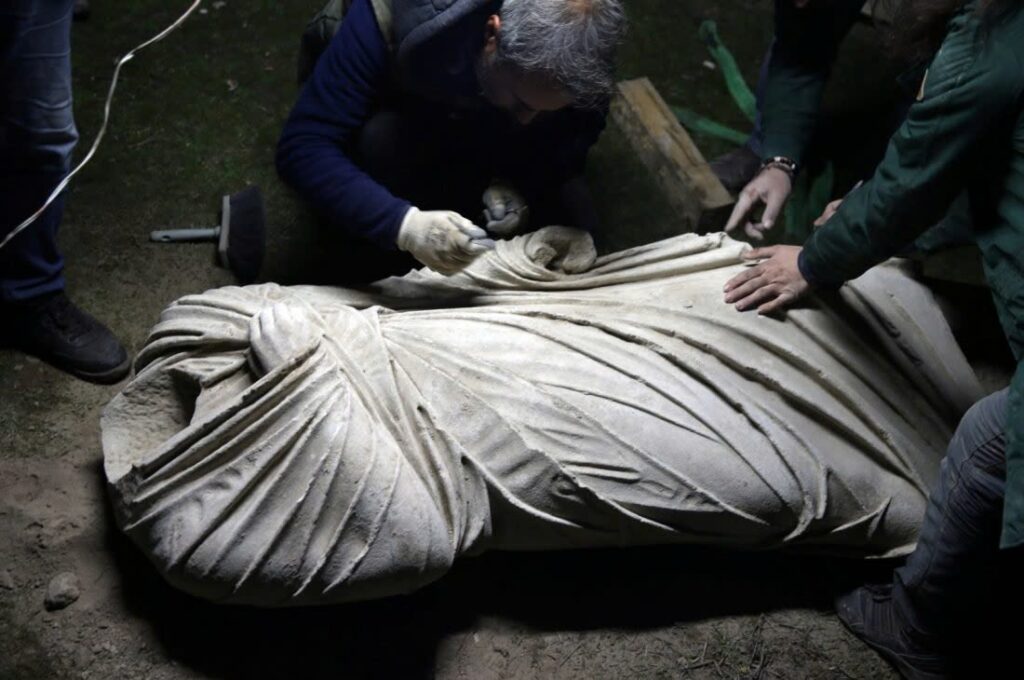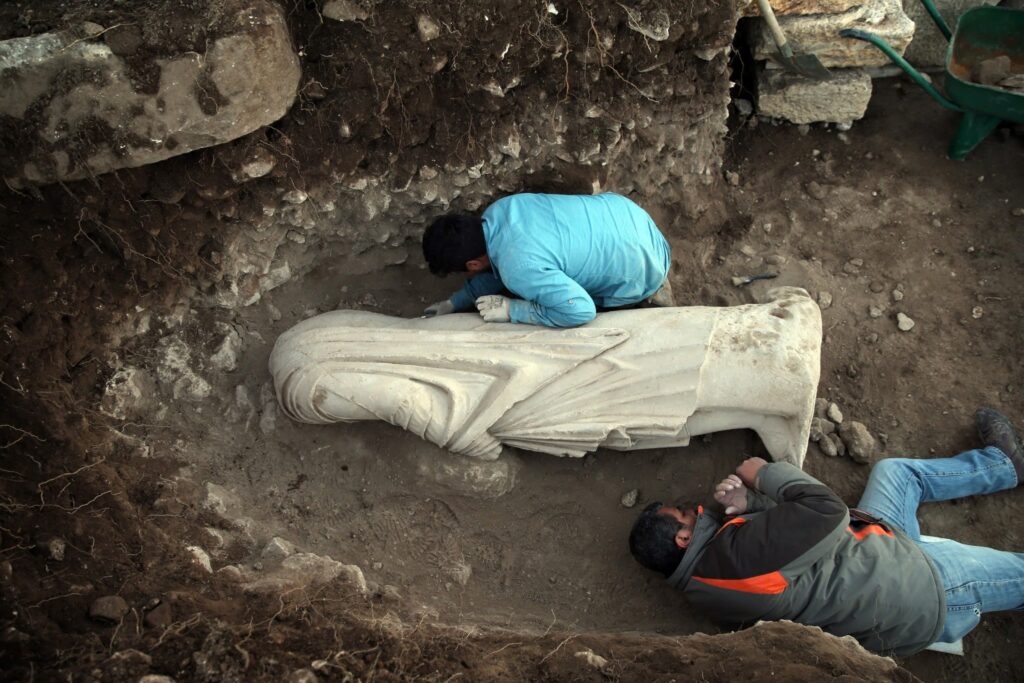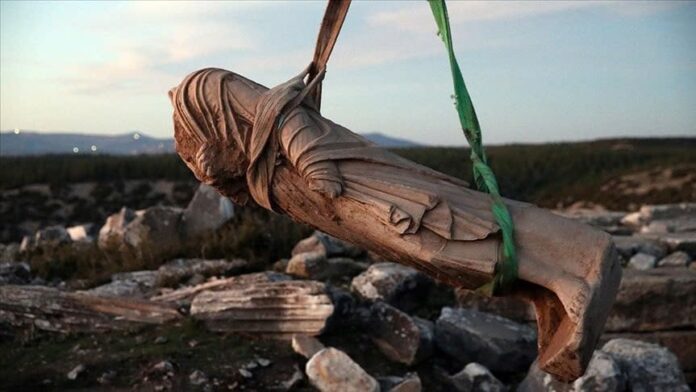Excavation Reveals Roman-Era Marvels in Uşak Province
Unearthing History in the Temple of Demeter

In a remarkable archaeological discovery, two 2,000-year-old statues have been unearthed in the ancient city of Blaundos, located in Turkey’s western Uşak province. The statues, believed to date back to the Roman period, were found in the courtyard of the Temple of Demeter during ongoing excavations.
A Glimpse into Blaundos: A Strategic Ancient City

Perched atop a hill and surrounded by three-stream beds, Blaundos stands like a peninsula, 40 kilometers from Uşak. Founded in the Hellenistic period by Macedonians following Alexander the Great’s Anatolian expedition, the city later fell under the rule of the Kingdom of Pergamum and the Roman Empire. Its strategic importance persisted through the Roman and Byzantine eras.
The Excavation: Unveiling Centuries-Old Secrets
Since 2018, the Uşak Museum and Archaeological Department of Uşak University have been conducting excavations in Blaundos. The current focus is on the area housing the temple dedicated to Demeter, the Greek mythological goddess.
A Tale of Two Statues

Dr. Birol Can, leading the excavation and faculty member of Uşak University’s Archaeology Department, shared details about the discovery with Anadolu Agency. The team uncovered two male marble statues in the temple’s courtyard:
- A headless statue measuring 185 centimeters (6 feet) tall
- A statue missing its head, right arm, and both legs
“We’re still determining whether these statues belonged to the temple or were street-side honorifics,” Dr. Can explained. “They could represent gods, emperors, or statesmen – further research is ongoing.”
Artistry at Its Peak

Dr. Can suggests that the statues may have been created in the Roman-era style, reflecting a period when the art of sculpture was flourishing. “We can trace this artistic peak back to the second half of the fourth century B.C.,” he noted.
Following their discovery, the statues underwent cleaning and examination before being transferred to the Uşak Archaeological Museum, where they will continue to be studied and preserved for future generations.
This exciting find not only sheds light on the rich history of Blaundos but also contributes to our understanding of ancient Roman art and culture in the region.

